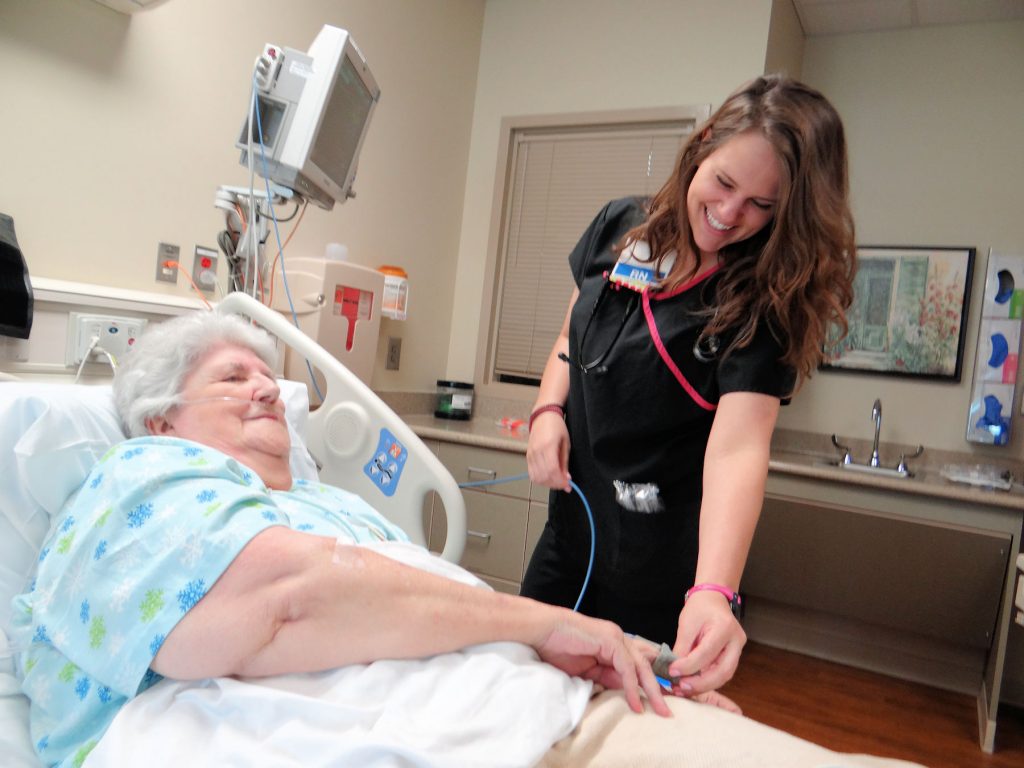
Tanner Health System’s economic impact to the region is more than $851.8 million in revenue for the local economy, according to a new report.
In addition, Tanner incurred almost $34.5 million in uncompensated costs to provide indigent, charity, other free care and bad debt expenses to the residents in the health system’s service area.
The annual Economic Impact Report from the Georgia Hospital Association (GHA), using data from 2015 — the most recent data available — shows Tanner also created almost 6,927 full-time jobs in the region.
The impact represents a $55 million — or almost 7 percent — increase from the previous year’s impact.
“At Tanner, we’re undergoing an effort to ensure our health system is ready to serve our region for generations to come,” said Loy Howard, president and CEO of Tanner Health System. “We’re expanding our facilities in Villa Rica and Bremen, building a new hospital in Wedowee and continuing to expand our services, even as many smaller health systems and independent hospitals throughout Georgia are struggling, and many are being acquired by larger health systems.”
Since the beginning of 2013, six Georgia hospitals have closed, and others — especially those in rural areas — are struggling to keep their doors open. The most recent Georgia Department of Community Health Hospital Financial Survey found that 42 percent of all hospitals in Georgia had negative total margins in 2015, while 68 percent of rural hospitals in the state lost money in the same year.
“The financial pressure that Georgia hospitals face is greater than ever,” said GHA President and CEO Earl Rogers. “Hospitals have a commitment to be there for their communities 24 hours a day, seven days a week, but for many, just remaining financially viable is a challenge. When hospitals suffer financially, access to care and services for all Georgians is at risk.”
A huge strain on hospital finances continues to be the explosive growth of uncompensated care. According to the GHA study, in 2015, Georgia hospitals absorbed more than $1.7 billion in costs for care that was delivered but not paid for.
That makes Tanner’s growing contribution to the region’s economy that much more impressive.
“We’re fortunate to have a robust, vibrant and locally-operated health system in west Georgia and east Alabama, so we can keep making important decisions regarding the health of our region locally,” Howard said.
Howard said Tanner’s strength lies in its strong relationship with the communities it serves, and the health system’s growing impact reflects its emergence as a true regional healthcare provider.
“The almost $852 million Tanner has been able to turn back into the region’s economy is evidence that people from Carroll, Haralson, Heard and beyond continue to trust us with their health,” said Howard. “As a community-based, nonprofit healthcare organization, their support for Tanner translates into investments in new facilities and services, new technology and more jobs for our area. That’s allowing us to grow into a true destination for people throughout west Georgia and east Alabama.”
GHA compiles its annual Economic Impact Report to provide a better view of how Georgia hospitals serve as vital economic engines for local and state economies. Figures provided by the Georgia Department of Community Health are processed through economic multipliers developed by the United States Department of Commerce’s Bureau of Economic Analysis to give a more accurate portrayal of how jobs and revenue generated by hospitals and health systems in Georgia actually impact their local economies.
Based on the hospital’s total direct expenditure — or how much money the hospital spent in 2015 — Tanner Medical Center/Carrollton led the system in economic impact with a total output of more than $485 million injected into the region’s economy. The hospital generated more than 4,261 full-time jobs in the community and led to the contribution of almost $243 million in household income for area residents.
Tanner Medical Center/Villa Rica and Willowbrooke at Tanner generated more than $192 million in total output and helped create almost 1,300 full-time jobs, contributing to a total household income of more than $68 million. Higgins General Hospital in Bremen generated more than $76 million in total output, more than 613 full-time jobs and household income of more than $31 million.
Tanner Medical Group, one of metro Atlanta’s largest multi-specialty physician groups, produced a total output of more than $97 million for the region’s economy, generated more than $64 million in total household earnings and almost 765 full-time jobs.
According to Howard, the contribution of Tanner’s impact reflects the importance of using local services and supporting local industries.
“The dedication of our medical staff and our team of healthcare professionals — as well as the loyalty of our patients — enables Tanner to continue as an economic leader,” said Howard. “Using local services creates local jobs and opportunities for our neighbors. Another aspect that makes this economic benefit figure even more compelling is that Tanner generated this impact while receiving no local tax dollars.”
Statewide, Georgia hospitals represented a $47.8 billion boost to the economy, employing more than 143,000 workers and indirectly creating more than 349,000 full-time jobs.
“There are a lot of people — not just employees — who rely on the jobs and income that Tanner generates,” said Howard. “Tanner’s impact in our region reflects the importance of supporting local businesses, hiring local vendors and choosing local contractors. It’s an obligation we take very seriously.”
Tanner’s impact on job creation extends even further when it comes to attracting new economic prospects to the region, since access to good health care and good schools are among the major considerations of companies that consider establishing operations in a region.
“Health care and education are fundamental parts of a sound economic development program,” said Howard. “That gives the region a significant competitive advantage over many other areas of the state.”
More information about Tanner Health System is available online at www.tanner.org.
###
Press Release
For Immediate Release
April 19, 2017
Contact: Tony Montcalm





